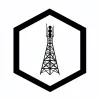Badge Summary
The Communications Preparation Merit Badge - Journeyman Level is designed for individuals who have mastered basic emergency communication skills and are ready to advance to more complex and technical aspects of emergency communications. This badge focuses on developing proficiency in amateur radio operations, understanding advanced communication systems, and taking a leadership role in community emergency communications.
By earning this badge, you will learn how to:
- Operate amateur (HAM) radio equipment
- Understand radio wave propagation and frequency selection
- Set up and maintain a home-based radio station
- Use various digital communication modes
- Implement cybersecurity measures for emergency communications
- Create and manage community-level emergency communication plans
- Build and use improvised antennas
- Participate in emergency communication drills and networks
This badge represents a significant step towards becoming a skilled emergency communicator, capable of providing crucial support during large-scale emergencies or disasters.


Comments and Recommendations